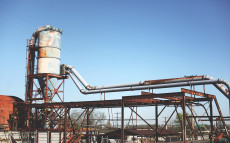- pathfindersAI
- Job Profile
Model Makers, Wood
Summary
Model Makers, Wood: Crafting Precision from Nature
What They Do
Model Makers, Wood are artisans of the highest caliber, specializing in the creation of precise wooden models that serve a myriad of applications. From intricate architectural prototypes to refined furniture pieces, these skilled professionals leveraging their deep understanding of wood properties to create items that are not merely functional but also aesthetically pleasing. Their expertise lies in translating complex designs, blueprints, or client specifications into tangible three-dimensional forms, often working within tight tolerances to ensure every detail is accurate.
Job Responsibilities
The daily responsibilities of a Wood Model Maker are as diverse as the projects they undertake. They begin their process by interpreting schematics and technical drawings, often collaborating closely with designers or engineers. Following this, they select appropriate types of wood, considering factors such as grain, durability, and workability.
They use a variety of tools, ranging from traditional hand tools like chisels and saws to sophisticated machinery like CNC routers and laser cutters. Their tasks include cutting, shaping, assembling, and finishing parts, ensuring each piece meets precise specifications. Additionally, they may be responsible for maintaining and repairing their tools and equipment, ensuring that every instrument performs optimally to achieve the highest quality workmanship.
Essential Skills
Model Makers, Wood must possess a robust set of skills that bridge the gap between art and science. Manual dexterity and hand-eye coordination are crucial, enabling them to manipulate materials with precision. They must have a keen eye for detail, as even minor errors can compromise the integrity of a model.
Technical skills are equally important. Proficiency with woodworking tools and machinery is essential, as is the ability to read and interpret technical drawings and CAD (Computer-Aided Design) files. Critical thinking and problem-solving skills are paramount when adapting designs or troubleshooting issues during the production process. Furthermore, strong interpersonal skills aid in effective collaboration with clients and team members.
Educational Pathways
Becoming a Model Maker, Wood typically involves a combination of formal education and hands-on experience. A high school diploma or equivalent is usually required, with coursework in subjects like mathematics, design, and industrial arts providing a solid foundation. Postsecondary education options include certificate programs, associate degrees, or bachelor’s degrees in fields such as woodworking, carpentry, or industrial design.
Technical schools and community colleges often offer specialized programs that combine classroom instruction with practical, hands-on training. Apprenticeships are also a common pathway, allowing aspiring model makers to learn directly from experienced professionals while gaining valuable on-the-job experience. Continued education and professional development through workshops, courses, and certifications can further enhance one’s skills and career prospects.
Career Prospects
The demand for skilled Model Makers, Wood remains steady, driven by industries such as architecture, manufacturing, and entertainment. Their ability to create precise prototypes and functional models is indispensable in product development, allowing companies to visualize and refine their designs before mass production. While technological advancements—such as 3D printing—pose challenges, they also present opportunities for model makers who can adapt and integrate new tools into their workflows.
Employment opportunities can be found in diverse settings, including manufacturing firms, architectural agencies, design studios, and entertainment companies. Self-employment is also a viable path, with many skilled artisans establishing successful independent businesses. The potential for career growth is significant, as experienced model makers can advance to supervisory or managerial roles, or specialize further in a niche area, enhancing their expertise and marketability.
Conclusion
In conclusion, Model Makers, Wood play a vital role in various industries, blending artistry with technical prowess to create detailed and functional wooden models. Their work involves a careful balance of precision, creativity, and craftsmanship, supported by a solid educational foundation and continuous skill development. As the demand for customized and accurate models persists, career prospects for these skilled professionals remain favorable, offering numerous pathways for growth and specialization. For those with a passion for woodworking and an eye for detail, a career as a Model Maker, Wood offers a rewarding and challenging endeavor.
Video
Compensation
Similar Occupations
In this area you will find other occupations that are close to the one you were viewing in tasks, knowledge and work environment. If the primary job profile you are viewing isn't quite to your liking, take a look around and see what else is available.
Basic and Premium Accounts have more alternative occupations available than the Free account.

Aircraft Structure, Surfaces, Rigging, and Systems Assemblers - 51-2011.00
Aircraft Structure, Surfaces, Rigging, and Systems Assemblers are responsible for constructing, assembling, and installing the mechanical components and systems of aircraft according to blueprints, specifications, and quality standards. They ensure the structural integrity and functionality of the aircraft through precise assembly of surfaces, rigging, and integrated systems, including electrical and hydraulic components.
-
$61,240/yr
Median Pay -
29,810
Number of Jobs

Cabinetmakers and Bench Carpenters - 51-7011.00
Cabinetmakers and bench carpenters specialize in constructing and repairing wooden cabinets, furniture, and fixtures, often working from detailed blueprints and specifications. They use a range of hand tools and machinery to cut, shape, and assemble wood products to precise measurements and high-quality standards.
-
$43,260/yr
Median Pay -
88,460
Number of Jobs